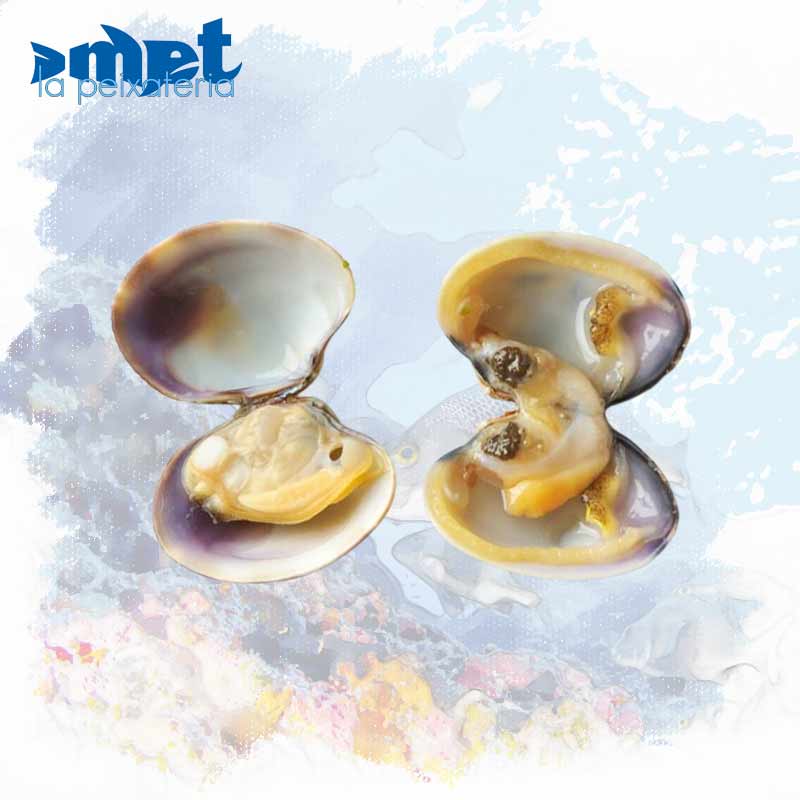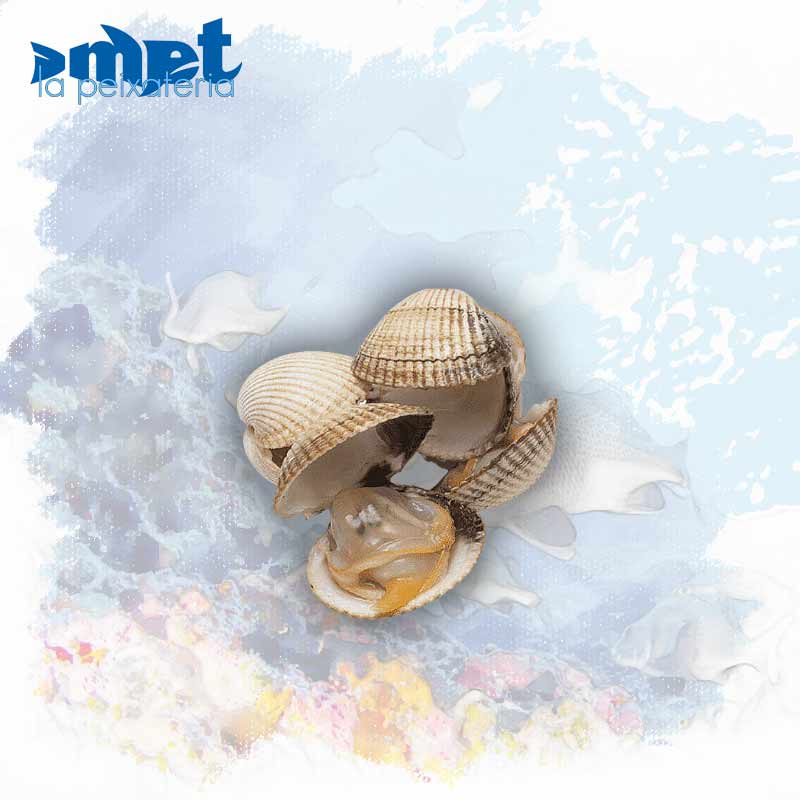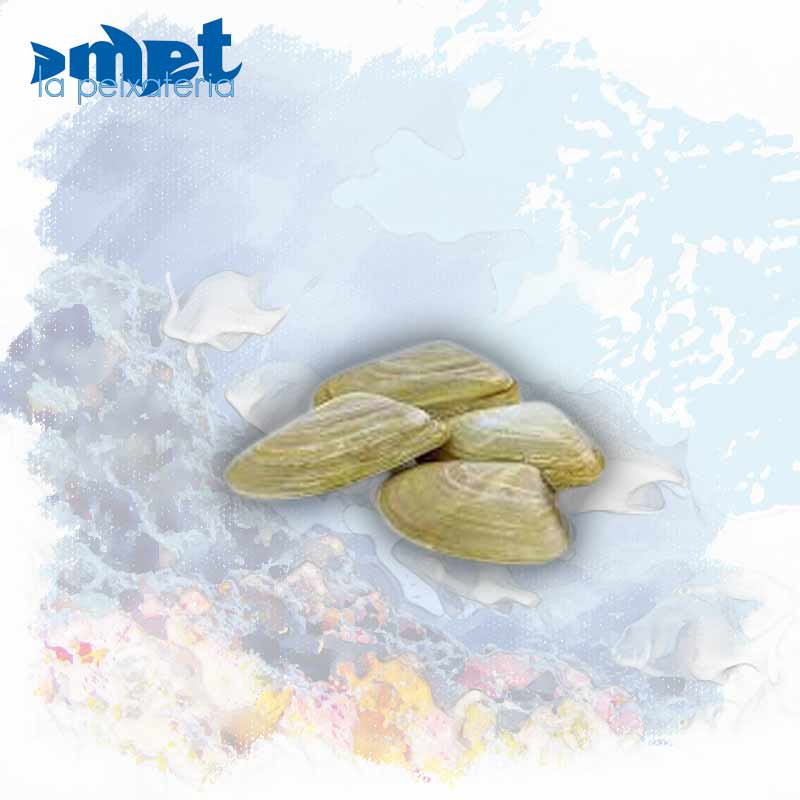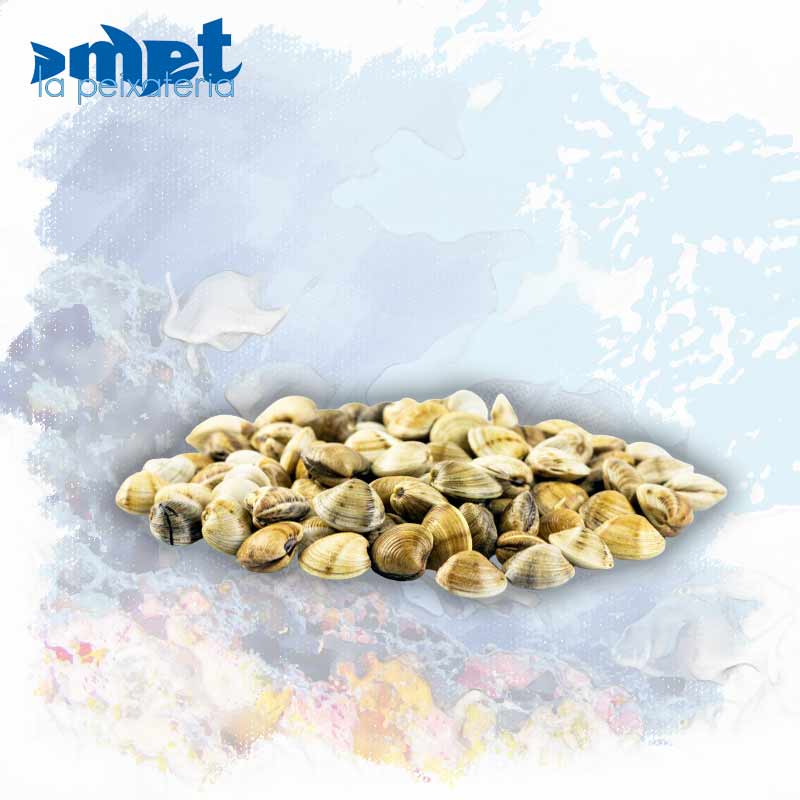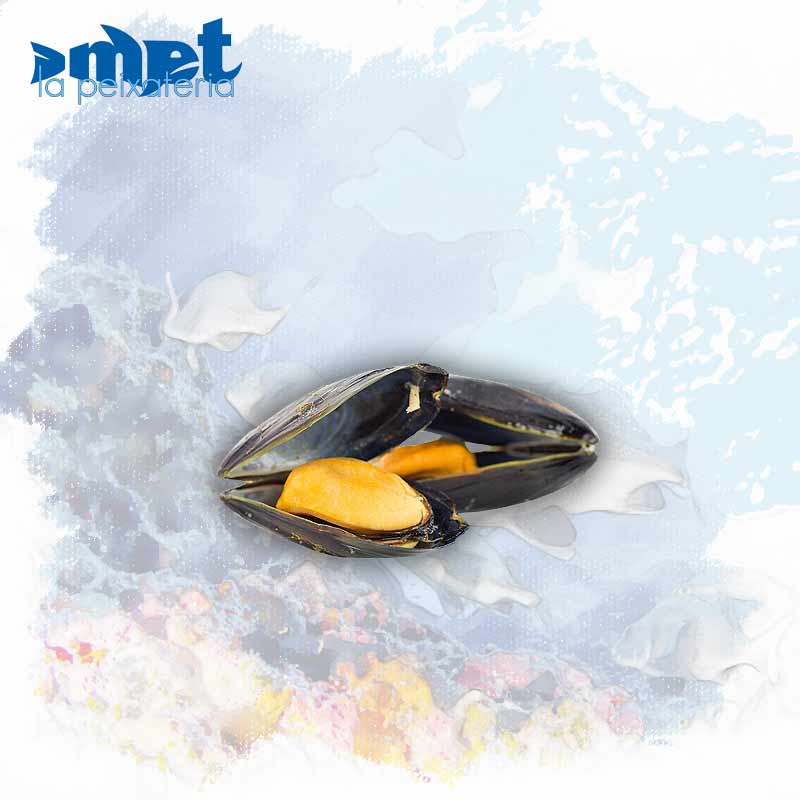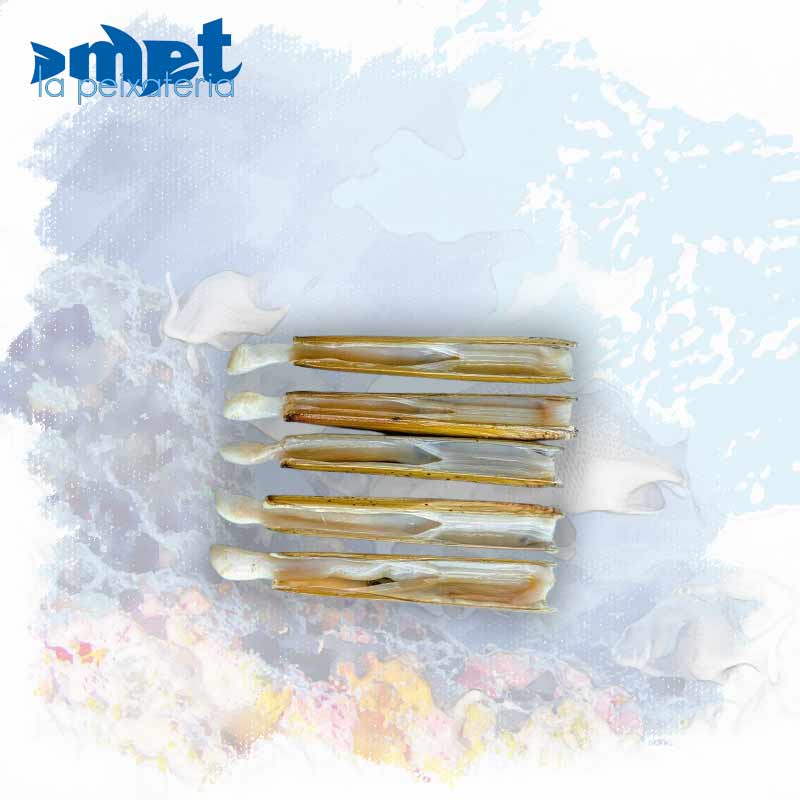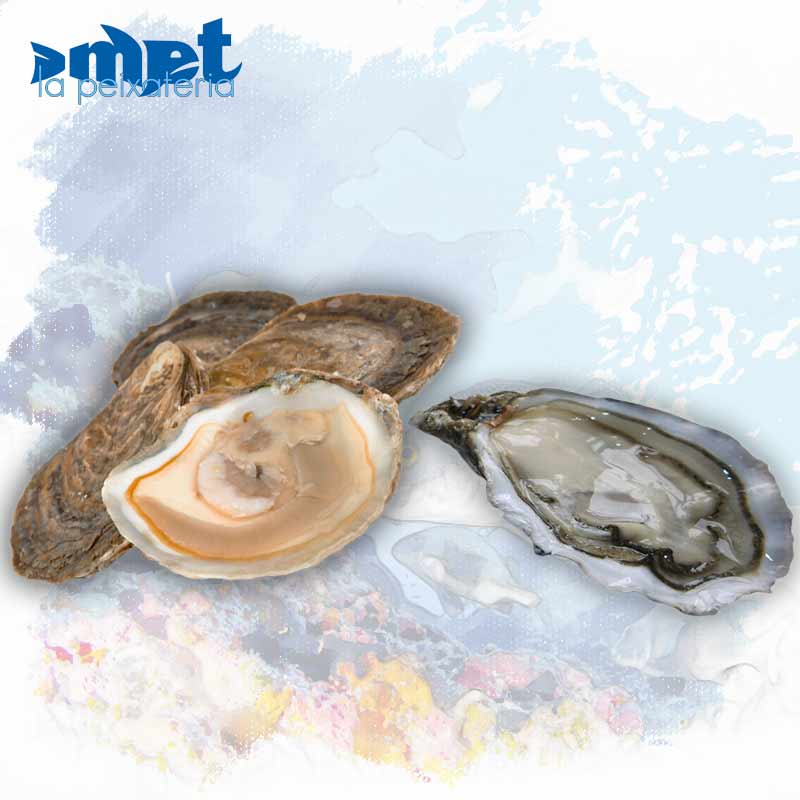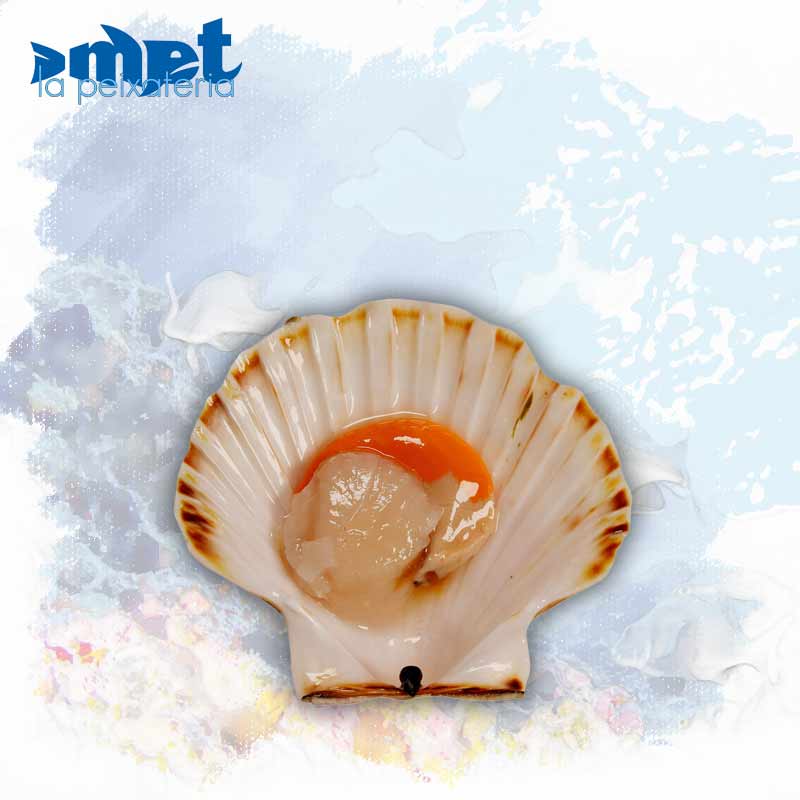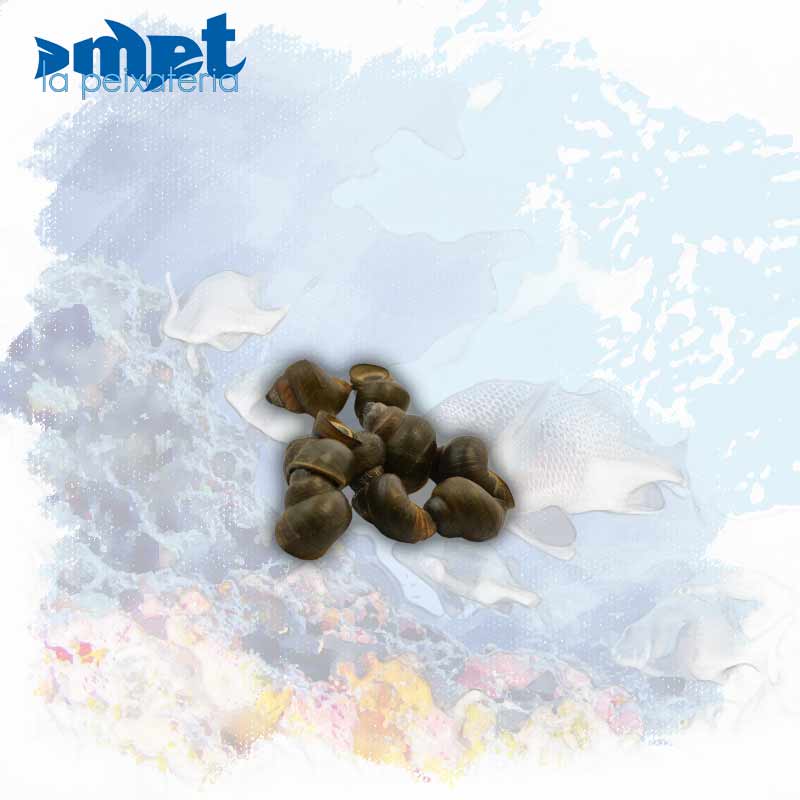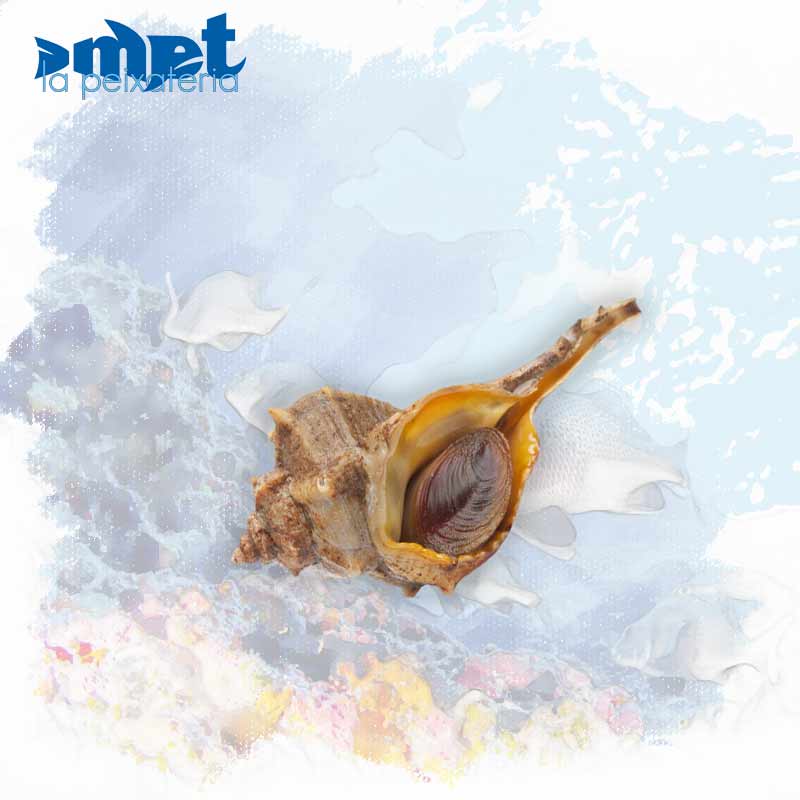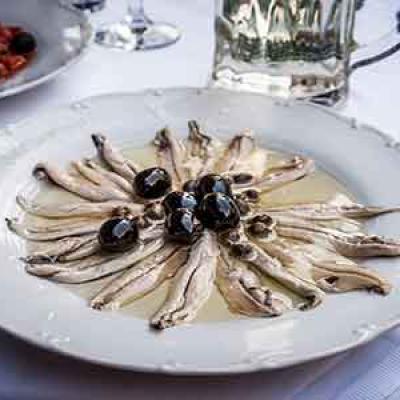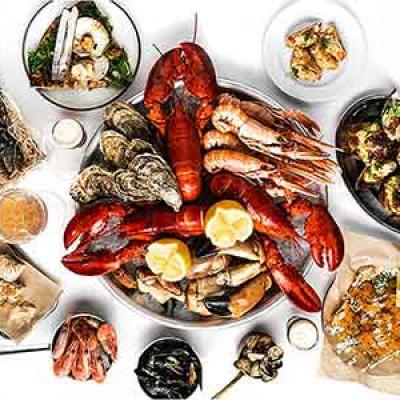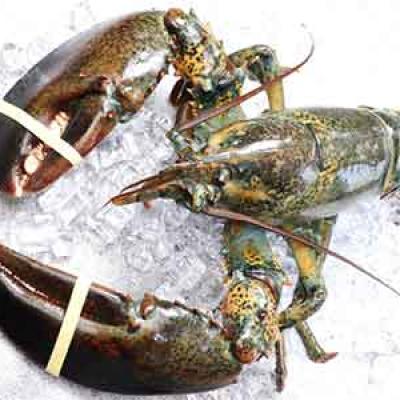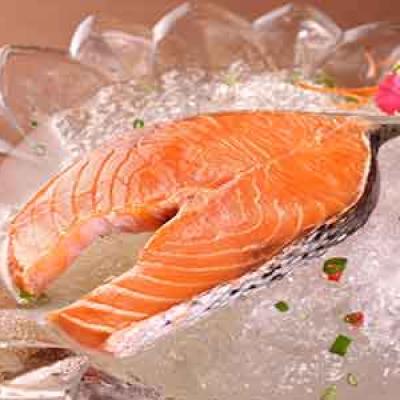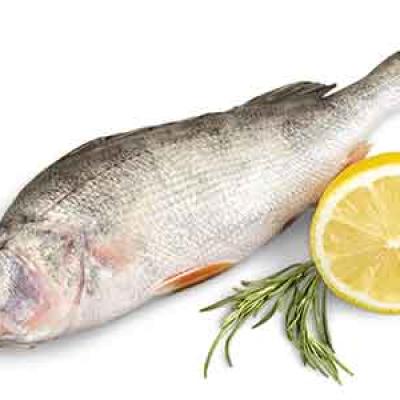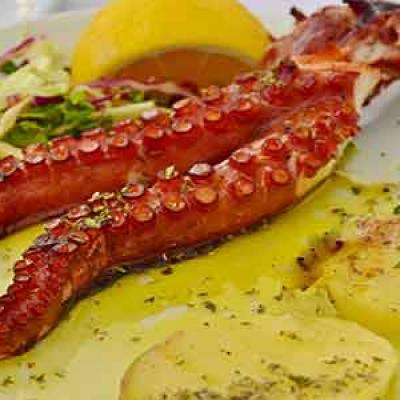In the case of mollusks, the most common are bivalves, species whose body is protected by two shells that remain closed to protect the animal. Within this subgroup we can include the chirla, the cockle, the scallop the coquina, the mussel, the oyster, the clam and the scallop. Most of these bivalves, by regulation, once caught, must spend a few hours in salt water tanks with strong current so that through their filtration system they are cleaned of any contaminants in their digestive system. Another subgroup is the gastropods, which are mollusks with a single shell, such as the pintail and the periwinkle.
Clam
The Clam is a mollusk whose habitat is on soft bottoms of fine sand or silt. It is basically located on the coastal strip buried between 5 cm and 30 cm centimeters of the aforementioned sandy and muddy soils and its habitat can be extended to estuaries. and estuaries that support less salty waters. Due to their demand, they are generally cultivated when they are embryos, the most common species that can be found at our stop are the fine clam, the slimy clam of national origin and the French clam. The most widespread trade in it is the farmed clam called The japonica, which is easier to grow than the fine clam and at the same time is more resistant, all of them are of excellent quality and some of them differ in their size.
The clam is a high-protein product, which provides zero calories and is very rich, especially in iron, in addition to providing a significant level of iodine and a very important level of potassium.
The clam can be eaten raw, alive, with a splash of lemon in the case of the large Galician clam and to taste its flavor in a more intense way grilled or panned with hardly any oil and covered to concentrate the heat and can be opened. Another way to cook them is to steam them without adding water and open them with the water they release over medium heat and consume them when they are already open (in all cases you have to discard those that do not open) and they can also be cooked at the marinera and as an accompaniment to different fish stews.
Cockle
The cockle is a mollusk that can range from 2 cm to 5 cm, the largest with a general average of 4 cm. It is an animal whose habitat is also on white bottoms of fine sand or silt, sometimes it can be found at depths of up to 10 m. Generally, the cockle that you can find at our stop is of national origin since normally all the cockle from Dutch and Danish origin almost never reaches our markets fresh and is massively destined for the canning industry.
Just as the clam has a high nutritional value, highlighting its high concentration of iron, which makes it a highly recommended diet for people with anemia, it also has a high concentration of B vitamins, iodine, and also a significant amount of potassium, and iodine, calcium, magnesium.
Apart from the popular tradition of being consumed preserved in appetizers before meals, and unlike other countries, it is a mollusk that we adapt to different culinary preparations depending on the region. They can be eaten grilled, steamed, in stews, as a complement to fish dishes, etc. etc etc
Wedge clam
Wedge clam,has become a classic in mediterranean zone as a starter and appetizer. It is a small mollusk with an average of 4 cm and even though it is consumed as a single mollusk, the different names actually indicate different species. It is a mollusk that lives in the surface sand and is collected when there is low tide. In our country there are specialists in its capture called “coquineros” along all the Galician coasts of northern Spain in the Mediterranean and especially recognized and appreciated throughout the southern area of Andalusia, specifically on the coasts of Huelva and Cádiz, it has a reproduction similar to the cockle and is collected, as we have said, when there is low tide with a kind of rake with a mesh dragging it through the sand and capturing several specimens at the same time.
In the nutritional aspect, they are mollusks rich in vitamins basically from group B and D with a contribution of folic acid and minerals, among which iron in iodine, potassium and magnesium stand out.
The most traditional cooking and in which you can savor the flavor of this mollusk in all its presence is grilled, you have to eat them when they are still hot, which is when you appreciate their flavor the most and like all bivalve mollusks, discard those that are they are not open
Venus Clam
The Venus Clam, like all its bivalve cousins, has its habitat basically in the sandy sediments of the coast, basically at a minimum depth, but it can be found at depths greater than 15 m, like all other bivalves, it feeds on platter that it filters through its system. digestive and its habitat extends to all the coasts of the Mediterranean including the coasts of Europe and the North Sea and is found in great abundance in the Adriatic Sea. It is a mollusk that is inexpensive and is sometimes consumed as a substitute for clams.
The chirla, the majority of bivalves, has an important contribution of iron, minerals such as iodine, calcium, magnesium, Omega three fatty acids and an important protein contribution.
Like all its companions of the genre, it is best cooked on the griddle, accepting steam cooking, accompanying fish stews, rice, paellas and in seafood sauces or with garlic and parsley, as we mentioned in all sections, those that remain closed must be discarded
Mussel
The mussel is a mollusk that we can find in the wild and cultivated in the classic mussel farms, which does not diminish the quality or flavor of the mussels, both the so-called rock mussels (since they are found attached in colonies on the coastal rocks) and Those growing in matter feed on plankton in the water through a filtration system that allows them to pump up to 8 l of water per hour. At our stall you will find different qualities of mussels, all of them exceptional, from the rock mussel, the Galician mussel, the Ebro Delta mussel and the increasingly popular French “bouchot” mussels, a species whose taxonomy is small in size although the belief mistaken that they are mussels, picked half-grown. It is a mussel of high gastronomic quality.
It is another of the mollusks rich in iron, potassium and a great strengthener of the immune system, providing significant amounts of selenium to our body as well as vitamins in its broad spectrum and minerals that are very important for our nutrition.
The mussel is another of the mollusks that allows many preparations, the most classic and traditional being open steamed, consumed when they are still hot or according to taste once they are cold, prepared in a marinara style, in green sauce, with garlic and parsley as a complement. the classic paellas and rice dishes, as a complement to the different seafood stews, and even soaked and fried ones, to open the steamed ones you do not need water and since they can be opened with what they release and in any case arrange them with a little water salty and like all bivalves, discard those that do not open.
Razor Shell
The razor shell is another of the mollusks highly appreciated in gastronomy. It owes its name to the elongated shape of its shell, similar to the handles of barber's razors. It is a mollusk that lives buried in the sand in low-tide sandy areas. It can be found in areas of the Mediterranean on the beaches of southern Spain and on beaches in the north. Its habitat is easily distinguished by the appearance of a hole in the sand in the sandy areas of low tide, which allows its manual extraction, generally carried out to prevent the bivalves from filling with sand by pouring a small handful of salt into the hole, which makes the animal come out at a time when it can be captured. In some areas of southern Andalusia there is still the tradition of catching them with an umbrella rod by inserting it into the hole. In the most intensive fishing, they are collected through bottle fishing in deeper sandy areas, directly by digging them up by hand.
At a nutritional level, razor clams have a significant amount of vitamins from the entire existing range, with a special contribution from those in group B. They also have a great contribution in phosphorus, potassium and magnesium, as well as other minerals.
At a gastronomic level, even though modern gastronomy has developed truly exquisite recipes with this mollusk, the classic way to cook them is grilled with a splash of oil and black pepper. And its canned consumption for snacks is also very widespread.
Oyster
The oyster is one of the most appreciated bivalves in gastronomy. It is a mollusk that can be found in the wild attached to rocks, especially in areas with many algae on the seabed and also in the sand. Its most widespread production is raised in bateas both of national origin or it could be the Galician oyster that differs from other oysters by being more rounded and flat or the Mediterranean oyster especially in the Ebro Delta area with a more elongated shape and more with each also known as oyster. At our stop you can find oysters from different national origins, including the very famous, high-quality Guillardeau oysters, well-known in all markets, for the G engraved on their shell, made with a laser, as a differentiating mark from the careful trays of the area of Marennes-Oléron, on the French Atlantic coast, which the family of the same name has owned for several generations.
Regardless of its quality and gastronomic appreciation, the oyster is an exceptional bivalve from a nutritional point of view. It has all types of vitamins from the range of these trace elements, including the range of B vitamins, an important contribution of iron, calcium, phosphorus, potassium, Omega three fatty acids, an important contribution of high-quality proteins and zero calories.
From a culinary point of view, the oyster is easy to define since its best consumption is that of a lifetime, fresh, alive with a splash of lemon and enjoyed. Although modern gastronomy adapts it to different preparations.
Scallop
The scallop is the most widespread bivalve mollusk in the world, although it is especially recognized in our country, in France, where it is paired with a religious symbol, hence its popularity. It is little known that in Spanish scallop is called “venera”, although it is normally known by its name in Galician “vieira”. Its name in Spanish originates from the presence of this bivalve in Botichelli's painting of the Venus, from which the name is derived. the presence of the giant shell in said work of art. Its habitat is basically in shallow waters, basically half buried in the marine sediment, the classic undulations of its shell indicate its age and growth. This bivalve is sold whole or you can find at our stop only the part of its adductor muscle already cleaned.
At a nutritional level, the scallop provides us with a high level of vitamin B 12, an important contribution of minerals, among which selenium stands out, and it is a mollusk that is very low in fat and calories.
It is a very ductile mollusk for gastronomy, perhaps the one that most admits multiple preparations, the most classic being grilled, or scallops au gratin, but it has multiple preparations with seafood sauces, in pasty and multiple preparations.
GASTEROPODS
Periwinkles
The Periwinkles is a gastropod mollusk that lives on rocks, especially in areas near the mouths of rivers. Its dark gray or black shell is shaped like an oval spiral and ends in a point. Its consumption is basically spread throughout the country. the northern area and the Mediterranean and especially the Cantabrian area, its contribution to gastronomy, especially in appetizers, comes from its easy preparation and cooking.
From a nutritional point of view, it is a low-calorie mollusk that is very rich in vitamins A and C, in addition to group B, and an important contribution of minerals such as iron, potassium, phosphorus and magnesium. Like other mollusks in which haute cuisine has incorporated them into different recipes.
Their most traditional way of eating is cooked and then cooled. It is important to first run them under a stream of cold water to clean them and leave them in a container with water and salt for half an hour to eliminate any possible sand they may have before boiling them.
Spiny dye-murex
Spiny dye-murex is a mollusk that has been widely used since ancient times and not necessarily as food. Its name in Spanish is not really Cañadilla, but it was very popular in Andalusia and ended up changing its name to the dialectal variety of Andalusian, leaving the use of the name Cañaílla almost generalized. The spiny dye-murex is a gastropod that lives inside an elongated shell with large spines arranged around it. It lives in sandy and muddy bottoms, generally near breakers, in the Mediterranean Sea and in the eastern Atlantic Ocean and is a classic of many appetizers in various areas of the country.
This mollusc was already used by the Phoenicians to extract the purple intent that was used to dye the clothes of emperors, priests and kings in ancient times, its value was up to 20 times higher than the value of gold. In Andalusia, this mollusc gave the popular name to the inhabitants of the Cadiz town of San Fernando, colloquially called "Cañaíllas".
At a nutritional level they have a good supply of vitamins and an important contribution of calcium, potassium and sodium.
Like other molluscs, modern cuisine has incorporated us into different truly exquisite recipes. But its classic consumption continues to be the one that prevails, boiled with brackish water and consumed once cooled.


